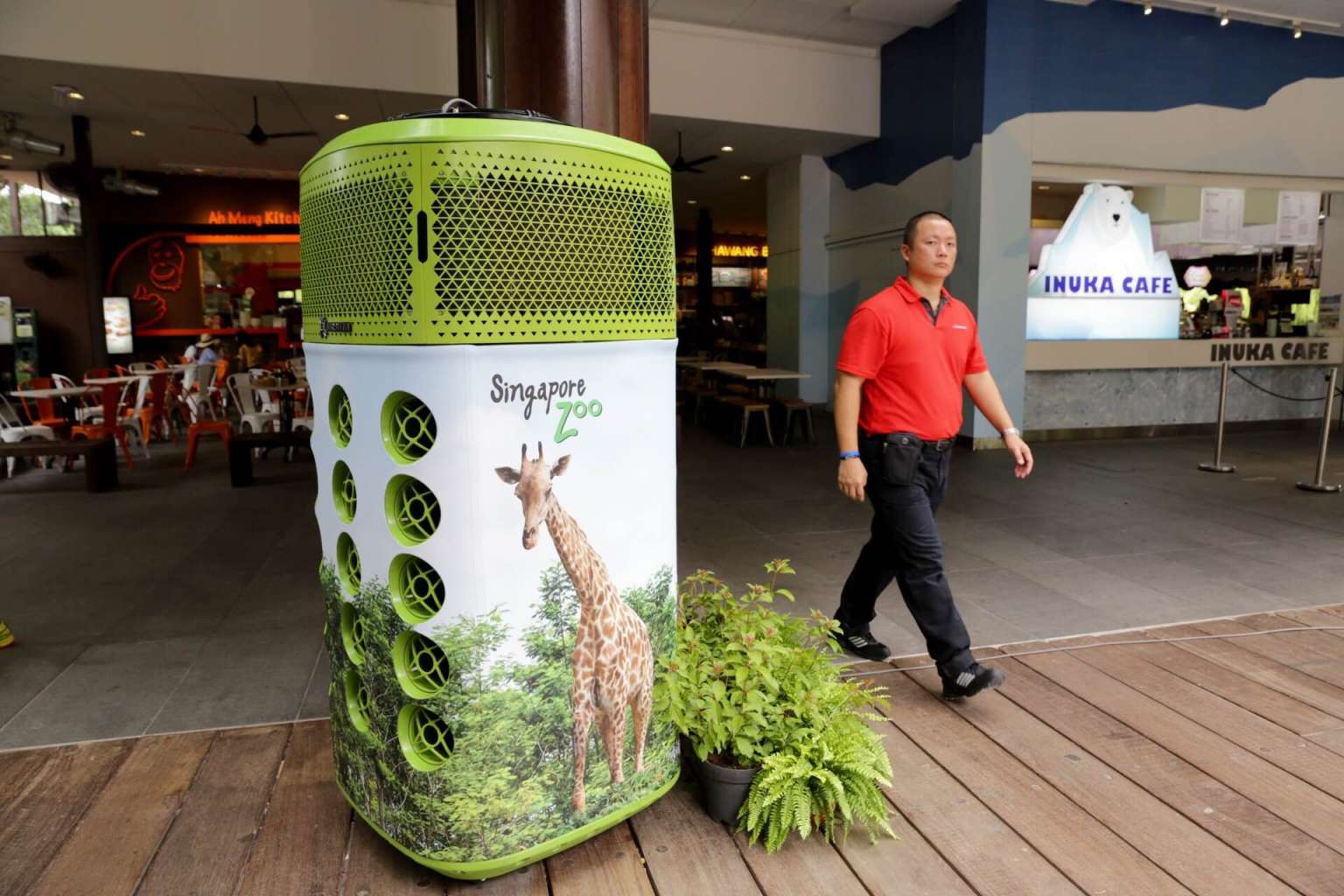Outdoor system that cools air to 24 deg C on trial at Singapore Zoo
Sign up now: Get ST's newsletters delivered to your inbox

One of the four Smart Coolers placed at the ticketing area during the six-months trial period.
PHOTO: TIFFANY GOH FOR THE STRAITS TIMES
Tiffany Fumiko Tay
Follow topic:
SINGAPORE - Visitors to the Singapore Zoo could soon be able to stave off the heat in some areas of the park, thanks to a new outdoor cooling system that is touted to blow air as cool as 24 deg C.
The Airbitat Smart Cooler, developed by Innosparks, an ST Engineering subsidiary, was unveiled at the zoo on Thursday (Aug 25), at a joint media briefing with Mandai Park Development.
Each unit, about the size of a refrigerator, can cool an area of about 55 sq m, and has a reach of 5m to 10m.
The cooler is eco-friendly, using 80 per cent less energy than an average air conditioning unit, and does not produce heat.
Four units have been placed at the zoo's ticketing area since Tuesday (Aug 23) for a six-month trial. If successful, 80 to 100 units will be rolled out in the near future at "cool zones" within four of Mandai Park Holdings' wildlife parks: the Singapore Zoo, River Safari, Night Safari and Jurong Bird Park.
The cool zones include areas such as ticketing counters and restaurants, said Mandai Park Holdings' group chief executive officer Mike Barclay.
"Singapore's outdoor heat and humidity can discourage our guests from extending their stay. We would like to address this heat issue in a sustainable, energy-efficient manner," said Mr Barclay.
While a timeline for the rollout and cost have not been determined, Mr Gareth Tang, the project's engineering lead and general manager for Innosparks, said that cost effectiveness is key for cooling large outdoor spaces.
An Airbitat unit costs $2.50 a day to run, while an conditioning unit with similar capacity costs about $12.50, said Mr Tang.
The machine is built around a "cold water core", where water is circulated and chilled through an evaporation process. Warm air is drawn in, and cooled by passing through the running water.
It also has an intelligent system that uses sensors to monitor the environmental temperature and humidity, and determine its output.
After 18 months of development, the units are expected to go into production next year, said Mr Tang. Other suitable locations include semi-open industrial spaces that are not suitable for air conditioning, such as aircraft hangars.
"We want to encourage the use of sustainable cooling, and pumping less heat into the environment," he said.

